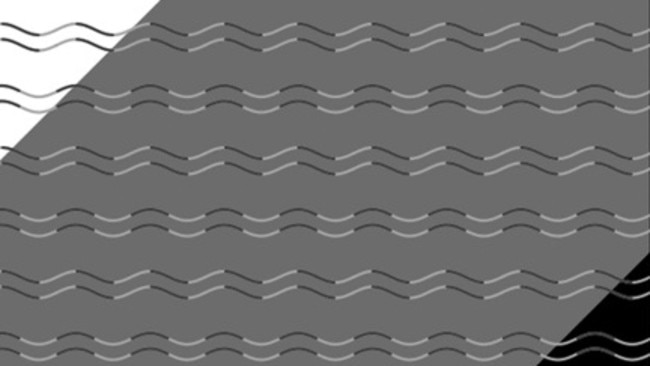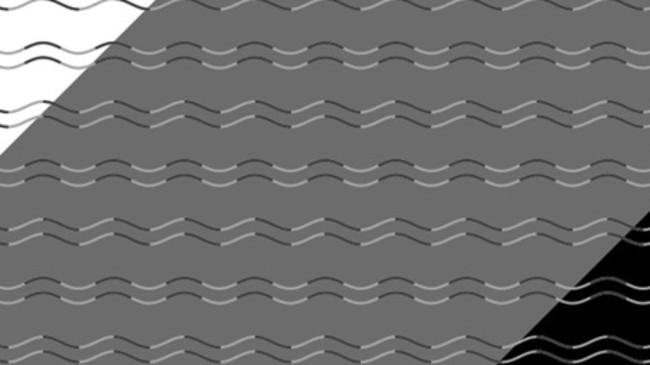Do you see corners or curves? This optical illusion tricks our minds into seeing what isn’t really there
A mind-blowing optical illusion dubbed Curvature Blindness is sweeping the internet and promises to make you question what you see.

READING LEVEL: RED
A mind-blowing optical illusion dubbed “Curvature Blindness” is sweeping the internet and promises to make you question what you see.
In the illusion image (below), all the lines are exactly the same despite how they appear to the human eye.
Japanese cognition* and illusion researcher Kohske Takahashi provided a detailed scientific breakdown and analysis of the optical illusion in a recent edition of the journal i-Perception.
“Here, we report a novel illusion – Curvature Blindness Illusion – that will provide novel implications for contour* perception*, in particular, for the underlying mechanisms of curve and corner perception,” Mr Takahashi wrote.

Put more simply, our eyes can be tricked into seeing a wavy line as a zigzag line depending on the colour scheme of the line and the background. In the image, the lines on the grey background appear to be in a zigzag pattern, as our brains are tricked into imagining a corner.
“Physically, however, all the lines are wavy lines with an identical shape; there is no triangular wave and hence there is no corner,” Mr Takahashi said.
“Despite the simplicity and effect magnitudes, to the best of our knowledge, no one has reported about this phenomenon.”
It’s unclear exactly why our brains perceive the zigzag contour, but Mr Takahashi proposes that our brains default to seeing corners rather than curves when they get confused.
WHAT IS AN OPTICAL ILLUSION?
An optical illusion is something that tricks the eye by appearing to be other than it is.
Illusions can use color, light and patterns to create images that can be deceptive or misleading to our brains. The information gathered by the eye is processed by the brain, creating a perception that in reality, does not match the true image. Perception refers to the interpretation of what we take in through our eyes. Optical illusions occur because our brain is trying to interpret what we see and make sense of the world around us.
GLOSSARY
cognition: the mental action or process of gaining knowledge and understanding through thought, experience, and the senses
contour: an outline representing or bounding the shape or form of something.
perception: he ability to see, hear, or become aware of something through the senses.
LISTEN TO TODAY’S STORY
CLASSROOM ACTIVITIES
Activity 1. Brain Games
Time: Allow 25 minutes
Write a small paragraph (less than 250 words), using your own words to explain the concept of ‘Curvature Blindness’.
Why is this considered an interesting phenomenon?
Extension: Look up some more curvature blindness illusions and see if you can see why the lines look like they do given the explanation from the Kids News article.
Curriculum links: English
Activity 2. Design Your Own Illusion
Time: Allow 30 minutes
Given the explanation of the curvature blindness illusion given in the Kids News article, see if you can create your own version of one. Remember the key points are to do with the colour theme of the line and the background.
Swap your design with a friend to see if they perceive wavy and zigzag lines in your drawing.
Extension: Walk around your class looking at other class mates designs and pick two that you find most effective to analyse and explain why it works.
Curriculum links: Design & Technologies, Visual Arts
VCOP ACTIVITY
With a partner see if you can you identify all the doing words/verbs in this text. Highlight them in yellow and then make a list of them all down your page. Now see if you and your partner can come up with a synonym for the chosen verb. Make sure it still makes sense in the context it was taken from.
Try to replace some of the original verbs with your synonyms and discuss if any are better and why.


